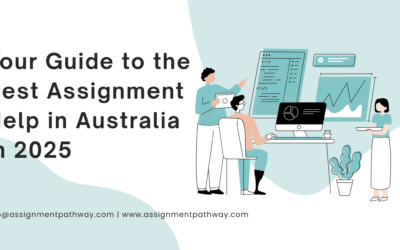Crafting Strong Conclusions for Your Assignments
Writing an assignment is only half the journey, crafting a powerful conclusion is what truly makes it memorable. Whether you’re drafting an essay, report, or research paper, the final paragraph shapes your reader’s lasting impression. In this post, we’ll explore strategies to build strong conclusions and demonstrate how Assignment Pathway a trusted assignment help company name can guide you to excellence.
Why Strong Conclusions Matter ?
A conclusion isn’t just a summary; it’s the final opportunity to emphasize your central argument and leave the reader thinking. As academic writing guides suggest, a well‐crafted conclusion:
- Reframes your thesis in fresh language.
- Synthesizes supporting points, rather than merely restating them.
- Explains the “so what?”.
- Ends with impact, such as a thoughtful question, prediction, or call to action.
Effective conclusions mark the culmination of your introduction and body, creating a “full‑circle” effect.
Structure of an Effective Conclusion
According to most academic writing standards, the conclusion should make up roughly 10% to 15% of the entire text. For a 1,000‑word essay, that’s approximately 100–150 words enough to wrap up your argument neatly without redundancy. Here’s a referenced checklist to build a conclusion that works:
- Restate your thesis but freshly: Don’t copy verbatim. Rephrase it to reflect the journey you’ve taken.
- Synthesize key points: Briefly recap your strongest arguments and how they supported your thesis. Avoid listing every detail.
- Answer “So what?”: Highlight the significance of your argument within broader contexts real‑world, academic, or future implications.
- Optionally acknowledge limitations or suggest further research (especially in longer or research‑based assignments).
- End with a strong closing statement: A call to action, a compelling question, a prediction, or a memorable quote ensures your conclusion resonates.
Avoid clichés like “In conclusion,” or “To sum up”, the reader already knows they’re at the end. Do not add fresh arguments or evidence in conclusion.
Types of Conclusion Strategies
Depending on your assignment’s tone and style, you might choose one of several concluding strategies:
- Summarization: A traditional approach—synthesizing your thesis and main points.
- Editorialization: Share a reflective insight or opinion, often used in persuasive writing.
- Externalization: Broaden the perspective, discussing larger implications or contexts.
You might also pose a follow‑up question (“Where next?”), acknowledge study limitations, or offer recommendations or next steps.
Common Mistakes to Avoid
Some pitfalls weaken conclusions:
- Announcing the conclusion.
- Introducing new information or evidence: Don’t confuse readers by bringing new data at the end.
- Under‑ or over‑length: Too short can feel unfinished; too long might replicate the body. Aim for 10–15% of word count.
- Undermining your argument: Avoid apologetic language like “I may be wrong.” Be confident.
How Assignment Pathway Can Help ?
When you need assignment help, whether it’s structuring your conclusion or polishing your overall essay, Assignment Pathway offers expert guidance every step of the way. As a dedicated assignment pathway company name, they specialize in:
- Structuring coherent assignment conclusions that reinforce your thesis
- Ensuring your conclusion answers the “so what?” question effectively
- Matching conclusion styles to your assignment type
- Polishing language to avoid clichés, repetition, and weakening phrasing.
Students who use Assignment Pathway consistently report improved clarity, cohesion, and impact especially in the concluding section, where arguments must pack a final punch.
Step‑by‑Step: Drafting a Strong Conclusion
Here’s a mini blueprint to write a conclusion that stands out:
- Rephrase your thesis: Begin by restating your central argument in new words.
- Summarize your evidence: Pick the top 2–3 points from your body that best support your thesis.
- Highlight significance: Answer “Why does this matter?” in one or two sentences.
- Optionally recommend or pose questions: If relevant, suggest next steps or future research.
- Finish with impact: End on a powerful sentence, pose a thoughtful question, make a broader claim, or call the reader to action.
This five‑part structure respects academic conventions while allowing flexibility based on assignment type.
Sample Outline (Conclusion for a 1,000‑Word Essay)
- Sentence 1: Rephrased thesis
- Sentences 2–3: Brief synthesis of key points
- Sentence 4: “So what?” significance in broader context
- Sentence 5: Final closing thought or call to action
Total: ~100–120 words
Final Thoughts
The conclusion serves as the project’s grand finale and your final chance to highlight your ideas and leave a lasting impression. A concise, well‑structured conclusion that echoes your introduction, synthesizes your arguments, and signals broader relevance can elevate an assignment from good to memorable. If you want assignment help, especially with crafting strong conclusions, consider reaching out to Assignment Pathway that’s helped hundreds of students refine their writing and achieve academic success.
By following these strategies and integrating expert support when needed, you’ll be able to write conclusions that not only summarize but resonate. Need help polishing your conclusion or full assignment? Reach out to Assignment Pathway for reliable assignment help today.





